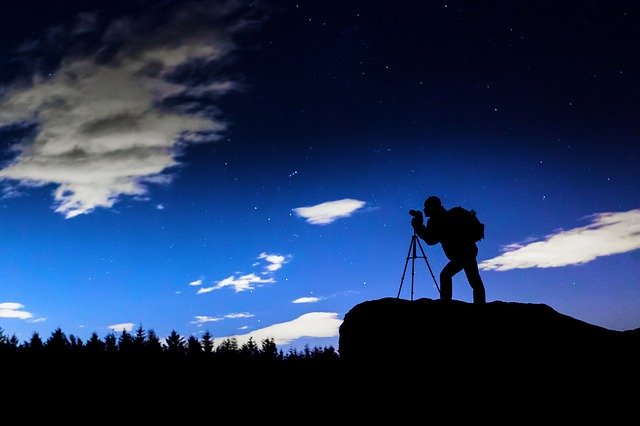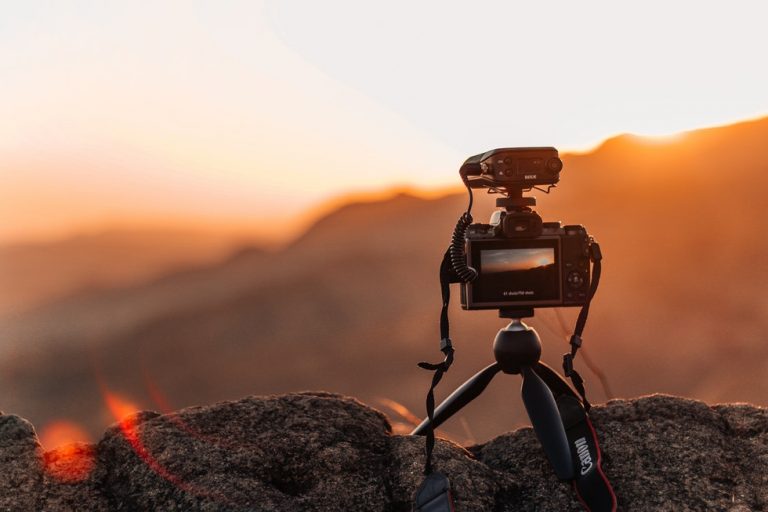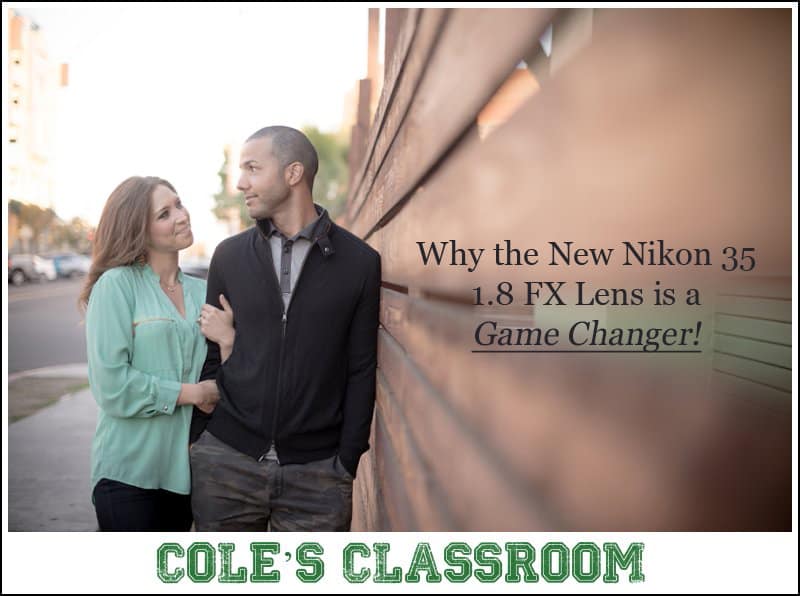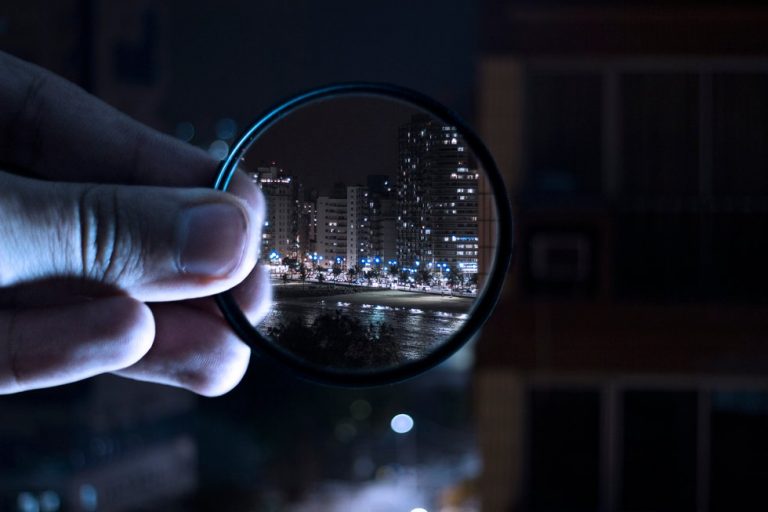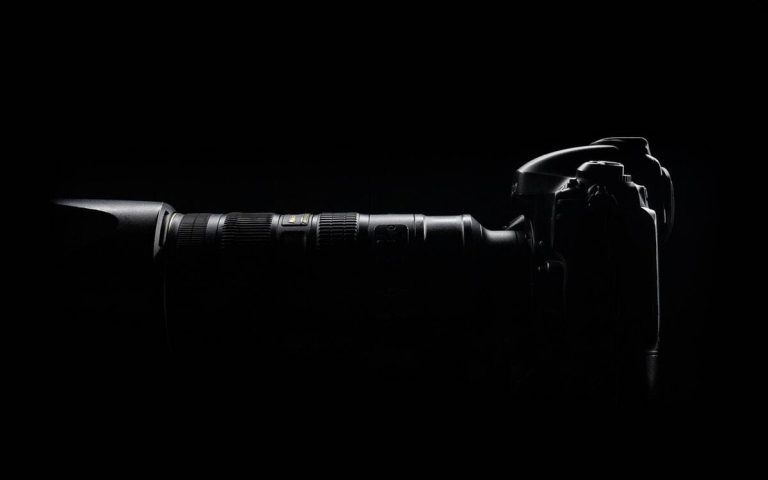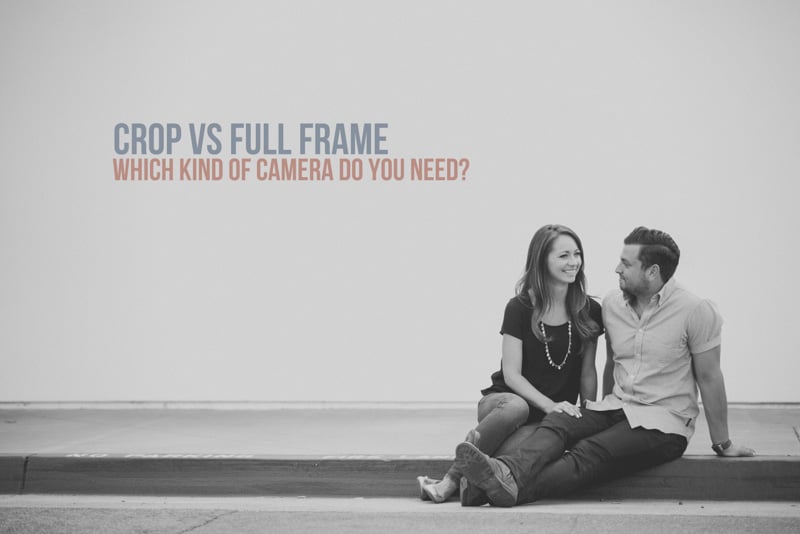You may be wondering if you need a monopod or a tripod for your photography gear, as using a slower shutter speed works best when the camera is supported and fixed in place.
We’ll discuss the monopod vs tripod distinction, provide a few tips, and suggest what works best for situations like hunting and landscape photography.
What’s a Tripod?
Image by S. Hermann & F. Richter from Pixabay
A tripod is a stand with three legs that holds a camera or other piece of equipment. You often see photographers working with these when taking shots of landscapes, portraits, or other features when a camera must remain stationary.
Tripods offer stability and keep the positioning of your camera in check, but most of them weigh several pounds, and some even come in multiple sections.
What’s a Monopod?
Image by Mircea Iancu from Pixabay
A monopod is another device that offers stability that is essential for capturing specific photos and shooting with a slow shutter. Instead of three legs like a tripod, the monopod includes a single leg with a base such as a suction cup or sharp foot.
Monopods vary in weight, but most don’t weigh as much as a tripod, and saving a few extra pounds can make a big difference when you are lugging photography gear for long distances. They also offer useful features but don’t require assembly or come in multiple sections.
The Benefits of Shooting With a Monopod?
One of the most significant differences when comparing tripod vs monopod is the number of legs, and this can have a substantial impact on things like camera shake, exposure times, and weather resistance.
Pros and Cons
Monopods often use quick release plates so a camera can be locked or removed in seconds. The smaller size of the monopod also makes it ideal if space is an issue, or you will be shooting at a busy venue. Since tripods can be a tripping hazard, many places have banned them from use during events.
Monopods are lighter than tripods, more comfortable to set up, and more manageable when carrying equipment for extended periods.
Monopods have less stability than a tripod, which means that you’ll still need a tripod for prolonged exposures or when it is windy. Not all monopods have the ability to be self-standing, so you’ll also need to hold onto it as you set up the shot.
What are the Benefits of Using a Tripod?
If you are looking to take photography shots with long exposures, a tripod offers the best in stability and locks your camera in place without much effort.
Pros and Cons
Tripods come in a wide variety of sizes and an even more significant number of heads so you can find exactly what you need. Many landscape photographers prefer a tripod because they don’t have to hold onto it as the camera captures the shot.
Tripods are also best if you want to experiment with the speed of your shutter-, and both tripods and monopods have uses in landscape photography and hunting photography.
A tripod typically comes with three feet that need setting up before you can take a shot, and this means you might have trouble staying with the action in crowded situations. Tripods are also cumbersome and aren’t essential for all kinds of photography.
If you’re looking to take some of the camera weight off of your neck, go with a monopod, tripods are best used for more stationary activities like time-lapses, studio photography and still life.
Why You May Want to Consider a Tripod-Monopod Combination
Each photographer will have different needs, but a tripod monopod combination can help you reap the benefits of both pieces of gear without the added weight or hassle of two separate items.
A monopod tripod combination may have started as a novelty item for photographers. Still, it’s grown into a potentially modular system that allows you to use any of the three tripod legs as a monopod.
It does take a minute to go from the monopod configuration to the tripod set up, which is the one drawback, but these devices cost less than two separate items and allow you to prepare for anything.
Which Option is Best For Your Photography?
Considering the pros and cons of a monopod vs tripod may not be enough to help you decide which item is right for you. The right choice will depend on several factors, including the type of photography you do, how you want to use your camera, and how often you might need a tripod for it’s enhanced stability during shooting.
If you’re one of those photographers that are moving around often for different shots, then you may find the legs of the tripod a pain to set up each time you move. While tripods have features that make them ideal for landscape photography and still life, they aren’t suitable for action shots where you need to change the location for getting the best photographs.
Image by Jill Wellington from Pixabay
Hunting is another example where having a tripod that locks in place can help you capture wildlife that might wander by, but it’s best if you check in regularly with the camera. A tripod will also help you get a clear image of an object moving quickly.
Why They Are Best for Wildlife and Landscape Shots
Wildlife photographers are known for using large, long lenses that are quite heavy as they pursue distant animals. If you plan to do a bit of hiking to capture photos, monopods can help cut down on the weight you’re carrying and make it easier to move swiftly over rocky and unstable terrain.
Image by Free-Photos from Pixabay
When pursuing a fast-moving subject, you may not have the time to set up the legs of the tripod, and having the ease of use of a monopod can help buy you valuable time to adjust camera settings such as shutter speed.
Image by David Mark from Pixabay
Landscape photography is an example where long shutter speed, exposure, and stability are necessary for capturing the best photos. The three legs of the tripod can adjust to offer the best positioning for your camera and remain in one location for an extended time.
Image by bertvthul from Pixabay
While monopods might limit the amount of time you can remain in one location, a tripod allows you the maximum amount of time possible to create the shot without any disturbance to the camera.
Shooting Video is Much Easier
A tripod with monopod set up could be the best of both worlds for shooting video when you’re working with varied terrain and scenes. A combination device will ensure that you’re prepared for every bit of the shoot, whether the subject is standing still or moving at speed.
Image by fancycrave1 from Pixabay
Having a combination device will also ensure that you have stability when you need it, and freedom of movement without having to haul extra gear.
Using Tripods and Monopods in Sports Photography
Sports photography may have been synonymous with a tripod in the past, but new monopods have taken over as a better option based on their weight, and ease of use when paired with a heavy camera.
Image by PublicDomainArchive from Pixabay
Monopods allow the camera to move swiftly from one location to another and hold the weight of the camera. A tripod would take up considerably more space, making it more difficult to situate the legs effectively and may also be a tripping hazard for those around you.
Other Places and Events to Use a Monopod
Image by StockSnap from Pixabay
Really crowded locations call for a device that can hold your camera steady without hogging space, and many venues have banned the use of tripods as they can become a tripping hazard in many situations. There are times when a monopod is the only option, but it’s also an extremely useful piece of gear.
Image by Free-Photos from Pixabay
A monopod will allow you to capture video and photos without having to hold the full weight of your gear in your hands the whole time. This setup can also serve you well during concerts while you are sitting, and during events when you will be standing for a long time.
Tripods and Photographing Portraits
Tripods are a great option for portraits because they allow you to make fine adjustments to your camera settings without having to hold the camera in place. Portraits often require moving the subject and adjusting the lighting, and sharp images become achievable when the camera is on a stationary base.
Image by Анастасия Гепп from Pixabay
Using a tripod allows you to compose each image in the viewfinder and create direct eye contact with your subject. A monopod may be useful for a single subject when in outdoor settings where you need to improvise or don’t want to lug a bunch of gear along.
Image by DanaTentis from Pixabay
Ideal for Night and Low Light Photography
Nighttime photography is a unique niche where sharp objects are combined with motion blur to create surreal images. If you used a monopod for this type of work, you’d have to stand completely still and hold the camera for a minute or longer, depending on the shot.
Image by David Mark from Pixabay
A tripod eliminates the guesswork when it comes to nighttime photography, and minimizes motion blur regardless of the exposure time. If your exposure time is longer than 1/15th of a second, you’ll want a tripod or your images will be full of motion blurring. For example, capturing stars can take an exposure of at least thirty seconds, and using a tripod is essential.
Using Tripods and Monopods in Sports Photography
Sports photography may have been synonymous with a tripod in the past, but new monopods have taken over as a better option based on their weight, and ease of use when paired with a heavy camera.
Image by PublicDomainArchive from Pixabay
Monopods allow the camera to move swiftly from one location to another and hold the weight of the camera. A tripod would take up considerably more space, making it more difficult to situate the legs effectively and may also be a tripping hazard for those around you.
Which Option is Best for You?
A monopod will always weigh less than a tripod since it has fewer legs and components, but then it can double as a walking stick or support pole in a pinch. If you are an avid hiker or backpacker, this type of versatility can help save you pack weight and allow you to have the necessary gear for nature photography.
If you plan to do photography or videography that uses sharp angles in relation to your subject, or if you are shooting at ground level, you might want to consider a tripod as it will easily conquer over a monopod in these situations.
It’s natural for photographers to have very set opinions when it comes to the tripod vs. monopod debate, and the best option for you will largely depend on the shots you’re trying to capture.
If you want to get your camera closer to your subject, for example, but can’t get your body physically closer, a tripod can be a valuable tool. However, for photoshoots where you’ll be in motion for most of the time, a monopod can be invaluable.
To find an answer to the tripod vs. monopod debate for your own uses, you’ll want to carefully think out your use case and what you’ll need to get the best results. Consider taking some tips from others who have worked with tripods and monopods for the type of photography you want to do, and experiment to find a good fit.
Conclusion
Having both types of camera supports is worth your time if you plan to partake in different kinds of photography, but a combination device can save you both time and money. A monopod is an excellent option for hunting or action shots but isn’t great for macro photography and long exposures.
A tripod is an excellent option for when you need the best possible stability, and if you want to work with exposure times and the speed of your shutter, this is a necessary piece of gear.
